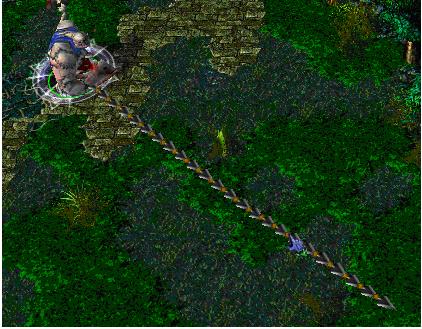Just a HookTime Limit: 4000/2000 MS (Java/Others) Memory Limit: 32768/32768 K (Java/Others)Total Submission(s): 20889 Accepted Submission(s): 10445 Problem Description
In the game of DotA, Pudge’s meat hook is actually the most horrible thing for most of the heroes. The hook is made up of several consecutive metallic sticks which are of the same length.
 Now Pudge wants to do some operations on the hook. Let us number the consecutive metallic sticks of the hook from 1 to N. For each operation, Pudge can change the consecutive metallic sticks, numbered from X to Y, into cupreous sticks, silver sticks or golden sticks. The total value of the hook is calculated as the sum of values of N metallic sticks. More precisely, the value for each kind of stick is calculated as follows: For each cupreous stick, the value is 1. For each silver stick, the value is 2. For each golden stick, the value is 3. Pudge wants to know the total value of the hook after performing the operations. You may consider the original hook is made up of cupreous sticks. Input
The input consists of several test cases. The first line of the input is the number of the cases. There are no more than 10 cases.
For each case, the first line contains an integer N, 1<=N<=100,000, which is the number of the sticks of Pudge’s meat hook and the second line contains an integer Q, 0<=Q<=100,000, which is the number of the operations. Next Q lines, each line contains three integers X, Y, 1<=X<=Y<=N, Z, 1<=Z<=3, which defines an operation: change the sticks numbered from X to Y into the metal kind Z, where Z=1 represents the cupreous kind, Z=2 represents the silver kind and Z=3 represents the golden kind. Output
For each case, print a number in a line representing the total value of the hook after the operations. Use the format in the example.
Sample Input
Sample Output
#include<iostream>
#include<sstream>
#include<algorithm>
#include<cstdio>
#include<string.h>
#include<cctype>
#include<string>
#include<cmath>
#include<vector>
#include<stack>
#include<queue>
#include<map>
#include<set>
using namespace std;
const int INF=100000;
int val[INF+1];
struct node//结构体表示结点
{
int total;
int left;
int right;
int mark;//是否上次被更新
} tree[INF<<2];
int create(int root,int left ,int right)//建树
{
tree[root].left=left;
tree[root].mark=0;
tree[root].right=right;
if(left==right)
return tree[root].total=val[left];
int a , b,middle=(left+right)>>1;
a=create(root<<1,left,middle);
b=create(root<<1|1,middle+1,right);
return tree[root].total=a+b; //在回溯过程中给total赋值
}
void update_mark(int root)
{
if(tree[root].mark)
{//假设被延迟标记过而且此时须要在root的子孙中找须要更新的线段。无论找不找到既然研究到了
// 此节点就要“落实”此节点total值 。并使延迟标记下移。
tree[root].total=tree[root].mark*(tree[root].right-tree[root].left+1);
if(tree[root].left!=tree[root].right)
tree[root<<1].mark=tree[root<<1|1].mark=tree[root].mark;
tree[root].mark=0;
}
}
int calculate(int root,int left,int right)
{
update_mark(root);//递归到每一个节点都要核实是否具有延迟标记
if(tree[root].left>right||tree[root].right<left)
return 0;
if(left<=tree[root].left&&tree[root].right<=right)
return tree[root].total;
int a,b;
a=calculate(root<<1,left,right);
b=calculate(root<<1|1,left,right);
return a+b;
}
int update(int root,int left,int right,int val)
{
update_mark(root);
if(tree[root].left>right||tree[root].right<left)
return tree[root].total;
if(tree[root].left>=left&&tree[root].right<=right)
{
tree[root].mark=val;
return tree[root].total=val*(tree[root].right-tree[root].left+1);
}
int a,b;
a=update(root<<1,left,right,val);
b=update(root<<1|1,left,right,val);
return tree[root].total=a+b;
}
int main()
{
int T;
cin>>T;
int c=0;
while(T--)
{
int n,q,x,y,z;
cin>>n;
for(int i=1; i<=n; i++)
val[i]=1;
cin>>q;
create(1,1,n);
for(int i=0; i<q; i++)
{
scanf("%d%d%d",&x,&y,&z);
update(1,x,y,z);
}
printf("Case %d: The total value of the hook is %d.
",++c,tree[1].total);
}
return 0;
}
|